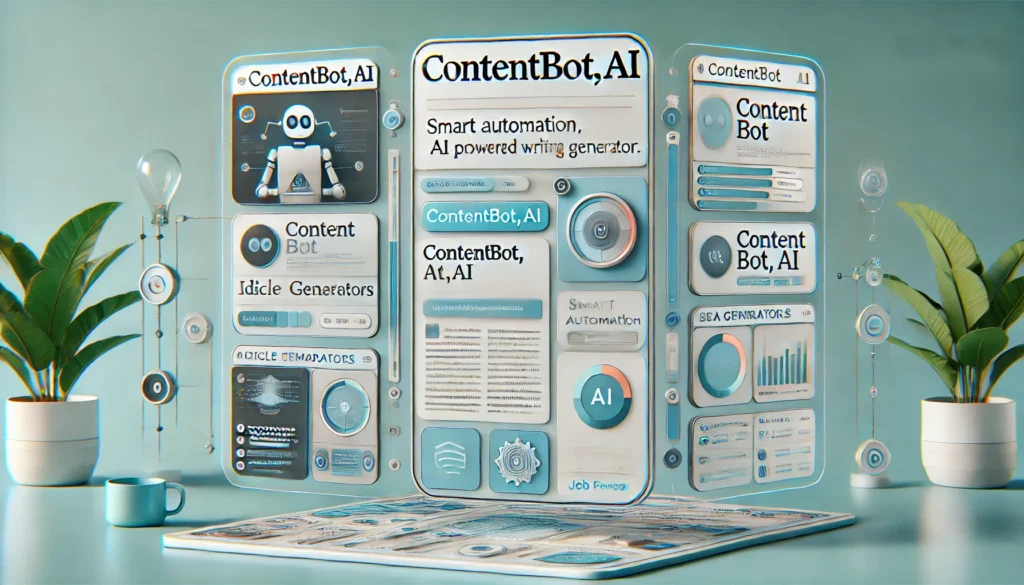A Fresh Way to Approach Blogging
If you’re involved in content marketing, you’re probably always looking for ways to produce more content faster while maintaining or improving quality How I Use AI to Write Better Blog Posts In half Time. Managing your company’s content creation process can often feel like an endless challenge. This is one reason why many marketers are turning to artificial intelligence (AI) for content generation.
While you’ve likely heard a lot about AI in the past, things are evolving quickly, and it can be difficult to keep up. In this post, we’ll cover:
- What AI writing is
- The capabilities and constraints of AI-driven content generation tools.
- How AI can enhance your content’s performance, giving you an edge over competitors.

How Did We Get Here?
Not too long ago, AI felt like something straight out of science fiction. Most people thought of things like self-driving cars or basic customer service chatbots when they heard the term. But that’s changed. The rise of AI has been rapid, and companies like OpenAI, the creators of ChatGPT, have spent years refining their technologies. It took OpenAI over seven years to develop ChatGPT.
What Is AI Writing?
AI writing means using AI software to generate text. These tools rely on large language models (LLMs), such as OpenAI’s GPT-4, which are trained on massive datasets of online text. These models learn patterns of human language and use this knowledge to generate text on virtually any topic included in their training data.
Thanks to recent advances, today’s AI tools can produce text that is indistinguishable from that written by humans.
How Does AI Writing Work?
AI writing tools typically work by having a user input a prompt. The AI scans its data and generates original text based on the request. Many AI tools can generate basic content in just a few seconds.

Can AI Write Blog Posts?
Indeed, AI tools like ChatGPT, Jasper.ai, and others are now capable of writing entire blog posts. For best results, it’s important to provide a detailed prompt. For example, instead of just asking for a general post about learning management systems, provide a more specific request like:
Create a 1,000-word blog post discussing the pros and cons of learning management systems for HR professionals in medium-sized organizations (up to 250 employees). Adopt a friendly, confident tone and incorporate statistics that foster high engagement.
This detailed input helps the AI create a much more targeted and relevant blog post.
Can AI Write Long-Form Content?
Indeed, AI can create long-form content such as ebooks or whitepapers. However, these types of pieces require more detailed prompts due to their complexity. You’ll also need to dedicate more time to editing and fact-checking longer content.
Why Use AI for Blog Posts?
The foremost advantage of utilizing AI for composing blog posts lies in its efficiency. AI can produce drafts in a matter of seconds, freeing you up to focus on refining and optimizing content. Moreover, you can create more posts in less time, boosting your visibility and authority in your niche.
Recommended AI Tools for Blog Writing
Here’s a table of AI tools that can help streamline your blogging process:
| AI Tools | Purpose | Features |
|---|---|---|
| ChatGPT | Blog writing, idea generation | Creates content based on Elaborate prompts can significantly aid in SEO optimization and the creation of long-form content. |
| Jasper.ai | Content generation, marketing copy | Produces blog posts, advertising copy, and more, with a focus on tone and style |
| Rytr | Writing blog posts, emails, and product descriptions | Simple and easy-to-use, with templates and content generation for various use cases |
| Frase | Blog post writing, SEO optimization | Focus on SEO-driven content creation and research, competitive analysis |
| Writesonic | Quick content generation for blogs and ads | Multi-purpose tool for blog posts, product descriptions, and social media content |
| ContentBot | Writing and editing blog posts | Content creation with an emphasis on AI-driven creativity and writing assistance |
Best Practices for Using AI to Write Blog Posts
- Fact-Check Everything: AI tools rely on datasets, which might not always have the most current information. Always double-check facts and figures before publishing.
- Maintain Your Brand’s Voice: AI tools are great for generating content, but they may not fully capture your brand’s personality. Be sure to add your unique touch to the AI-generated content.
- Optimize for SEO: While some AI tools can assist with SEO, it’s still important to do your own keyword research and apply SEO best practices to your posts. A Step-by-Step Guide to Writing Blog Posts with AI
- Generate Content Ideas: Use tools like BuzzSumo or StoryLab.ai to discover trending topics.
- Keyword Research: Use AI-powered keyword generators like CopyAI or Twinword to identify the best keywords for your post.
- Create a Briefing: Use tools like WriterZen to generate an SEO-friendly outline for your blog post.
- Write Your First Draft: Use AI writing tools like ChatGPT or Jasper.ai to generate your initial draft.
- Proofreading: Use tools like Grammarly or Hemingway to refine your content and fix grammar or readability issues.
- Maintain Internal Links: Ensure your internal links are up to date using tools like LinkStorm or Link Whisper.
- Add the Human Touch: No matter how much AI you use, make sure to review your content for consistency with your brand’s voice and to add any personal insights. Final Thoughts

AI can significantly speed up the content creation process, but it’s not a substitute for human creativity and strategic thinking. Use AI to generate rough drafts and handle repetitive tasks, but always fine-tune the content to make it your own.
By following these tips, you can enhance your content production while maintaining quality and a consistent brand voice.

